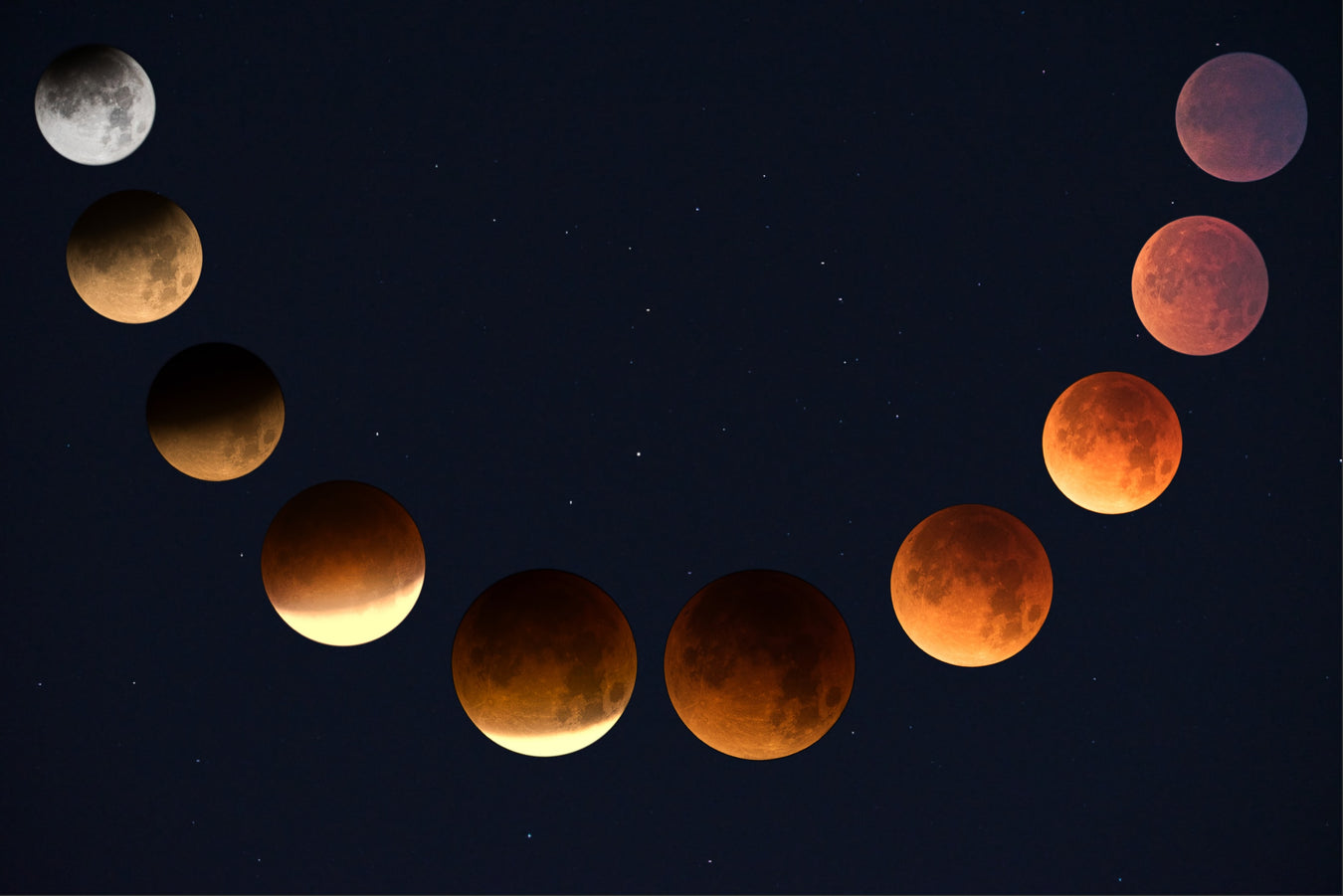
Astronomical Events We Can Look Forward to in 2021
2020 hasn't been kind to many of us. Between the devastating wildfires, a global pandemic and the subsequent economic uncertainty, this year has been rough on everybody.
But here at Sky-Watcher North America, we’re optimists! We don’t pout about a cloudy night or dwell when our telescope doesn’t work right! Instead, we roll up our sleeves and find the next golden opportunity to enjoy the night skies with good company. In this post, we're going to discuss major astronomical events happening in 2021 so that we can give our fellow astronomers something to look forward to next year.

December 21 - Great Conjunction of Jupiter and Saturn
Yes we know, this is technically in 2020, but it didn’t feel right leaving a planetary conjunction in the midst of the holiday season off our list. The Milky Way’s two most photogenic planets, Saturn and Jupiter, will appear as if they are touching at just 0.1 degrees apart. To make this even more exciting, a thin crescent moon will be only a few degrees away on December 16, creating the opportunity for some brilliant nightscape images.
So what’s the big deal?
This will be the closest conjunction of these two planets in 397 years! The last time these planets were this close, Galileo was still 9 years away from publishing Dialogue Concerning the Two Chief World Systems which debunked geocentric theory in the universe and led to his imprisonment.
The frequency of conjunction depends on how far away the planet is from the Sun. Jupiter’s orbit lasts 12 years, while Saturn’s takes 30 years. As a result of their long orbits, these planets only meet in the sky every 20 years.
After this conjunction, the next one will not occur until November 2, 2040, when these two planets will be 1.1 degrees apart, 11 times larger than the conjunction on Dec 21!

How do I see it?
Just after sunset on December 21, the planets will be visible near the southwestern horizon. The planets will set below the horizon after a couple hours, so make sure you’re ready to go EARLY!
Recommended Equipment

May 26 - Total Lunar Eclipse
Next May we’ll get to view a total lunar eclipse. Similar to a “blood moon”, here’s how they work: Earth casts two shadows, the umbra and the penumbra. The penumbra is the partial outer shadow, while the umbra is a dark, full shadow at the center. As the moon approaches the umbra, it won’t look much different. But once it’s moved fully in the umbra shadow, the moon will have an eerie shadow with an ominous orange glow.
So what’s the big deal?
Lunar eclipses can only occur at full moon, but that doesn’t mean every full moon. The moon’s orbit lies on a slightly different plane than Earth, which is why we also have partial lunar eclipses. Contrary to popular belief, solar eclipses are actually more frequent, happening anywhere from 2-4 times a year according to NASA. But whereas solar eclipses produce a small path about 50 miles wide, lunar eclipses can be seen by over half of Earth, making them easily viewable by a much larger audience.
How do I see it?
The 2021 total lunar eclipse will be best viewed from the western United States occur just after midnight at 12:47am (PST) on May 26. The moon will be approaching the western horizon when the moon is in the umbra, and will be viewable for about 14 minutes.
Recommended Equipment
Celestron 8x42 Nature DX Binoculars

June 10 - Annular Solar Eclipse
On the morning of June 10th, our friends in Canada will wake to a spectacular treat: an annular solar eclipse. These occur when the moon covers the sun’s center but the outer edges are still visible, creating a dynamic ring of fire effect (aka an annulus) for viewers on Earth.
So what’s the big deal?
Annular solar eclipses can only occur during new moon AND the moon is near its furthest point from Earth. Like lunar eclipses, annular solar eclipses do not occur every new moon due to variations in the moon’s orbit.

How so I see it?
Starting just north of Thunder Bay, this eclipse will already be underway at sunrise with the path of totality arching across parts of Ontario, Quebec, and Nunavut. Viewers in northeastern U.S and eastern Canada will also see a partial eclipse, as illustrated from the map below. Viewers in the path of totality should expect about three and a half minutes of annularity.
Keep in mind, partial eclipses require special eye protection. Viewing a partial and annular eclipse without special protection will cause damage to your eyesight. Cameras require special protection as well.
Recommended equipment
Photo:
Canon 70-200 f/2.8 L
Solar Filter
Visual:

August 13 - Perseid Meteor Shower
The Perseid Meteor Shower occurs in late summer every year as Earth passes through the orbit of Comet 109P Swift-Tuttle. It peaks on the evening of Thursday August 12th and is expected to produce 50-75 meteors per hour. Although this won’t be the strongest meteor shower of the year (more on that later), it will be the most popular due to the warm summer nights and a moon that is only 13% full.
So what’s the big deal?
Meteor showers occur when Earth’s orbit intersects with a comet or asteroids orbit, which is why they occur at approximately the same time every year. As we pass through a comet’s orbit, meteors are created by debris left behind after the comet has passed too close to the sun, causing them to disintegrate. Keep in mind there are hundreds of known comets, so it’s actually pretty rare for the orbit of any mass in space to intersect with the orbit of Earth.
How do I see it?
Find a secluded viewing spot away from city lights, and allow 20 minutes for your eyes to adjust. Make sure you keep your cell phone put away because the light from your phone will make it much harder to find meteors.
Recommended Equipment
Fortunately you don’t need any special equipment to view a meteor shower but we would recommend coming prepared with a red LED headlamp and plenty of warm clothing. We also recommend a blanket or a sleeping bag; you want to be comfortable as you gaze at the stars.
December 14 - Geminid Meteor Shower
The strongest meteor shower of the year, the Geminid Meteor Shower will be active from December 4 to December 17, with it peaking around midnight on December 13. At its peak, Geminid is expected to produce approximately 120 meteors per hour.
So what’s the big deal?
While the Perseid Meteor Shower is the more popular event every year, the Geminids will have much clearer viewing thanks to the cool winter skies. If you can brave the cold, you’ll be rewarded with the most dazzling show of the year.
How do I see it?
Like the Perseids, viewing will be best just before midnight. Find a dark sky spot outside of the city and give your eyes 20 minutes away from cell phones and other light to adjust to the dark skies.
Recommended equipment
Warm Clothing
